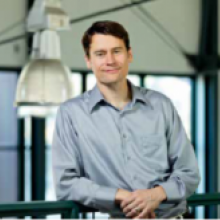
MIKE KOROLYK JOINED TIPPING in 2006 and has been a Principal for eight years. He earned both his BS in civil engineering and his MS in structural engineering at UC Berkeley. His work at Tipping has focused on nonlinear response history analysis, and he has broad and deep experience modeling existing and historic structures as well as new structures. He has an exceptional ability to balance detailed understanding and intuition around dynamic nonlinear behavior with practical aspects of design and construction. In support of Tipping’s work, he has developed a number of powerful software tools. In 2017, he co-founded Tipping Applications, an independent firm devoted to selling software solutions primarily for Structural Engineers. He has been directly involved in Tipping’s most significant projects and has helped drive Tipping’s innovative endeavors. In his free time, he enjoys spending time with his wife and three children, playing music (drums, guitar, violin), exercising (hiking, biking), and woodworking, and he is a committed member and volunteer at his church.
In nonlinear response history analysis, each project is a new adventure.
To begin with, each building is different: different material type, different architecture, different configuration, different topography. On top of that, seismic demands vary from one site to another and from one Code cycle to another.
Armed with our past experience, we build a complicated model, attempting to make the right choices with regard to granularity and elemental inputs.
For existing buildings, the modeling process can take weeks and is often fraught with potential error as we read old drawings and try to translate what we find into ASCE 41 modeling parameters.
Modeling a new building is typically more straightforward in terms of modeling parameters since we have full knowledge of the design intent and since modern prescriptive design rules lead (we hope) to more predictable behavior, yet since the building does not yet exist, analyzing the proposed new building is embedded in the iterative design loop.
We subject the model to a suite of eleven ground motions, each with thousands of time-steps, and wait, often days, for the analysis to complete.
Within the analysis results may be the best opportunity for understanding the essential aspects of the building and the keys to finding the optimal design. Usually, they first embarrass us and show how poor some of our critical modeling assumptions were!
Throughout the process of modeling, analyzing, and synthesizing the results, there is a meta-problem: how we see. Although an airplane can go anywhere on earth, if it is engulfed in the mist of clouds or fog and does not have the instruments to see where it is going, it is not only useless but dangerous.
Analysis results can be like a cloud or fog, and we are most effective to the extent we develop the ability to see.
In this presentation, we discuss some of the challenges in visualizing information and the opportunities that good visualization affords. We push back against the notion that presenting data in a compelling manner is obsolete or that we engineers (number people) don't need to do it. We think about some good practices and some we might want to avoid.
